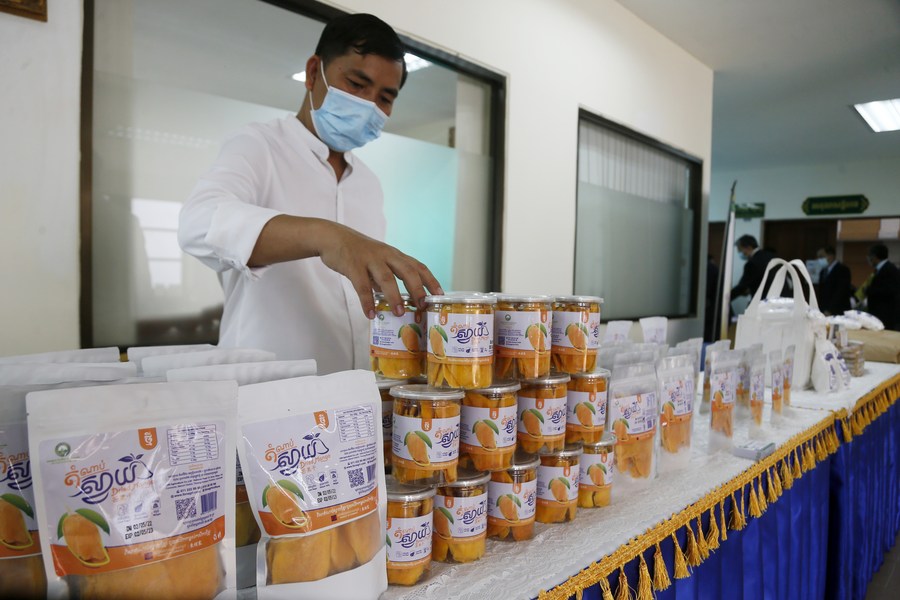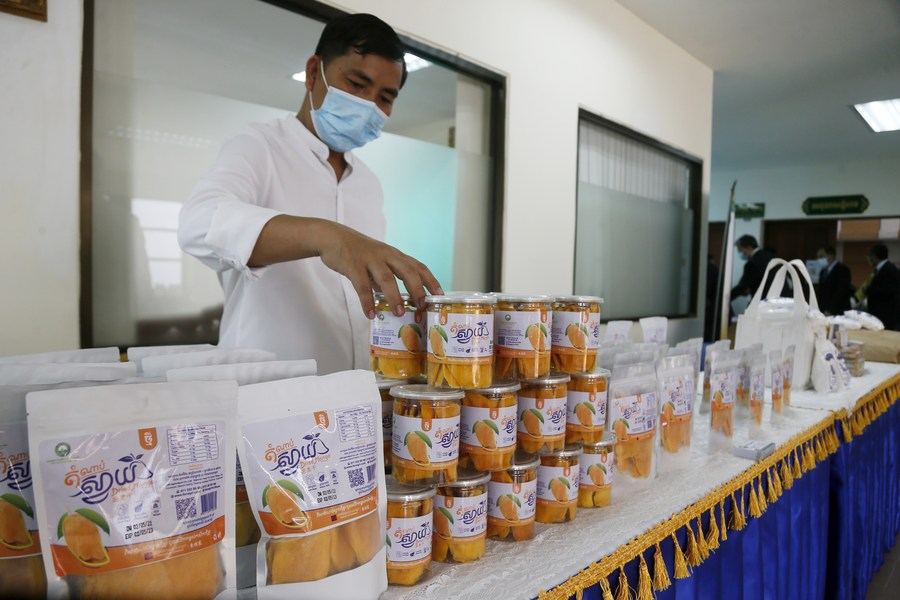BEIJING, May 20 (Xinhua) -- The 2022 Cambodia-China Trade and Investment Forum was convened on Wednesday, exploring ways to further boost business relations between the two countries.
Held under the theme of "Share Development Opportunities and Create Regional Prosperity," the half-day forum was attended by some 100 business executives in person and dozens of others via video links.

Dried mango products are displayed at the 2022 Cambodia-China Trade and Investment Forum in Phnom Penh, Cambodia on May 18, 2022. (Photo by Phearum/Xinhua)
Speaking at the event, Cambodian Ministry of Commerce's Secretary of State Seang Thay said China is the largest investor and top trading partner of Cambodia.
Thanks to the Regional Comprehensive Economic Partnership (RCEP) and bilateral free trade agreements (FTA), China-Cambodia trade has seen a steady growth. In the first quarter of this year, Cambodia's foreign trade exceeded 13 billion U.S. dollars, up 9.1 percent year on year, while its trade with China accounts for a quarter of the total trade volume, amounting to 2.87 billion U.S. dollars, up 30.14 percent on a yearly basis.
The RCEP and bilateral FTA have also helped Cambodia to diversify its exports and to further integrate into the regional and global economy. According to a recent economic update report by the World Bank, Cambodia's economy is projected to grow 4.5 percent in 2022, up from three percent last year, and over the medium term, the economy is expected to grow at around six percent.
Another report on the impacts of the RCEP, also by the World Bank, projected that Cambodia's real income gains during 2022-2035 will reach around four percent, ranking the third among 15 RCEP members.
As the Association of Southeast Asian Nations (ASEAN) chair for 2022, Cambodia will play a constructive role in the year when China and ASEAN enter a new era of comprehensive strategic partnership.
China-ASEAN trade saw a rapid growth in the first quarter of this year, which rests on a slew of economic cooperation platforms, including China-ASEAN free trade zone (FTZ) initiated in 2002, the comprehensive strategic partnership established in 2021 and the RCEP taking effect in January 2022. The steady recovery of regional industrial chain and the rising agricultural product imports by China have greatly contributed to the growth.
The food and energy price hike induced by mounting uncertainties in the world may pose risks to global supply chain. In this regard, it is imperative for the two sides to double down on infrastructure investment under the Belt and Road Initiative, explore trade collaboration potential and further enhance economic support for each other. In this way, the two sides could inject more certainty to the global economy and contribute Asia's part to tackle global challenges.
(Edited by Li Shimeng with Xinhua Silk Road, lishimeng@xinhua.org)




 A single purchase
A single purchase









